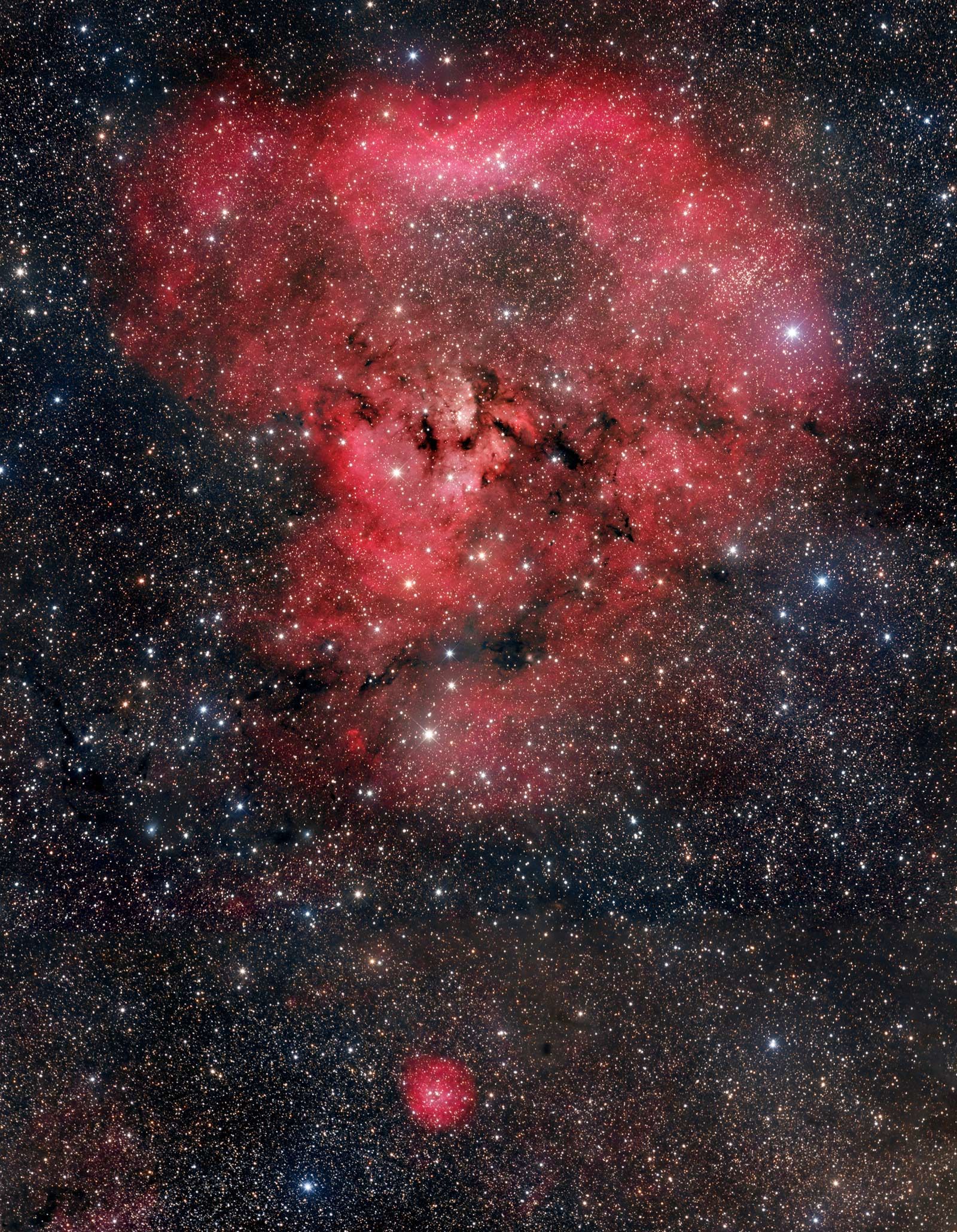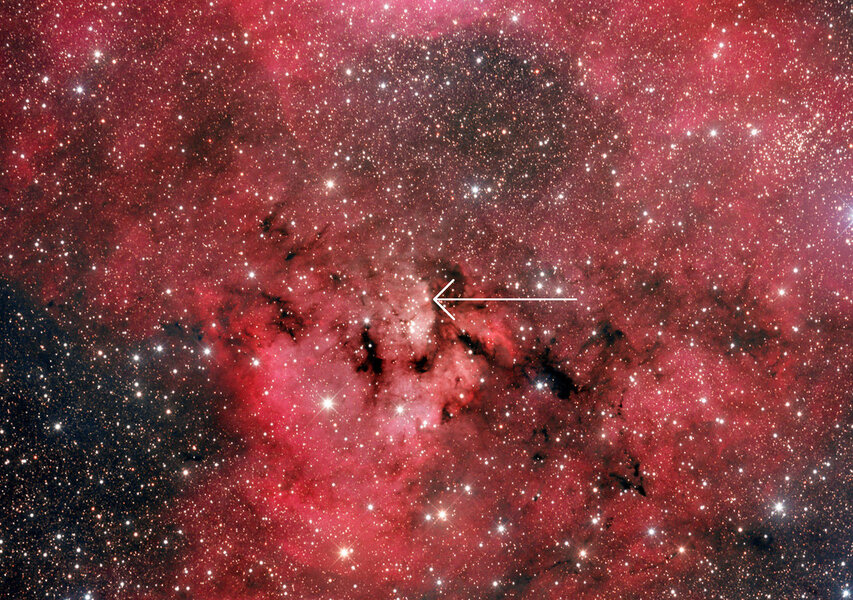Create a free profile to get unlimited access to exclusive videos, sweepstakes, and more!
The Question Mark Nebula

Sometimes the Universe asks you a question.
And, sometimes, it punctuates it.
Behold, the Question Mark Nebula!
OK, that's not an official name — I just made it up — but c'mon. What else would you call it? It's a question mark.
It's actually several different objects all in the same place. The overall top part is called NGC 7822, with the glowing gas part called Sharpless 2-172, surrounding the very young star cluster Berkeley 59 (which is probably only about 2 million years old). The little red glowing dot below the curly part is Sharpless 2-170.
This image was taken by my friend and astronomer Adam Block (to see a much larger higher-res version, click here), and I gotta give him credit: He keeps finding objects I've never heard of, and taking incredible images of them.
This is in the constellation Cepheus, not far from the north celestial pole. When you look in that part of the sky you're peering directly into the disk of the Milky Way galaxy, in the opposite direction of the center. Because it's in the plane it's lousy with gas and dust, so there's a lot of fun things to see, including all this pictured.
The distance is uncertain, but it's likely about 3,000 light years away. The gas is reddish because it's mostly hydrogen, which glows red when nearby stars energize it with ultraviolet light. That's emitted by massive, hot, luminous stars, and those don't live long — just a few million years — so it all works out well for us. Nebulae that are actively making stars will make a handful that are big enough to make the gas glow, and we get these gorgeous structures all lit up for us to see.
But… what stars are lighting this nebula up? There are several O-class stars there, ones that are very massive. But it turns out there's one in particular that is a beast. Called BD+66 1673 (from the Bonner Durchmusterung catalog, and its coordinates on the sky), it's actually a pretty weird star. It's a binary system, with a very beefy O5 star orbited by a somewhat smaller but still pretty luminous B star. We see these two orbiting edge-on, so it's an eclipsing binary: From our viewpoint, once per orbit the primary O star passes directly in front of (or eclipses) the secondary B star, causing a small dip in the light from the system, and half an orbit later the B star passes in front of O star, causing a deeper dip (because the brighter star is being eclipsed).
That O star is a monster. It has a surface temperature of 45,000°C, and is 100,000 times as luminous as the Sun! It's probably the most luminous star within 3,000 light years of the Earth. It's such a powerhouse that it's likely the primary source of energy in the nebula. It also has strong winds blowing from it that are carving out a hole in the gas.
Interestingly, despite being such a brute, it's hard to find! I had to go to SIMBAD and then look at the image in Aladin (the small inset image to the upper right in that link; click the arrows to enlarge the shot and then use your mouse scroll wheel to zoom out or go here to see the Aladin view in a separate browser window) to find it. Here it is:
Yeah, it doesn't look like much, but replace the Sun with that star and the Earth would get cooked.
It's interesting that it's not the brightest star in the image. Some of the brighter ones are likely foreground stars; the nebula is 3,000 light years away and we're looking through a densely populated part of the galaxy, so there are bound to be stars closer, some of which can appear brighter, even if they are intrinsically less luminous.
But there appear to be brighter stars in the cluster nearby (to the lower left), and that's odd. I suspect that we're seeing the star through some dense dust — you can see lots of dark lanes of dust lying around the nebula. These are clouds of rocky or carbonaceous grains that absorb and scatter away visible light. If there's enough dust it becomes opaque, completely blocking light coming from behind it. It's possible that there's some dust in front of BD +66 1673, dimming it.
The nebula marking the dot, Sharpless 2-170, is also pretty interesting. It's also called The Little Rosette (because it bears some resemblance to the huge and spectacular Rosette Nebula). The round shape is a giveaway: It's a Strömgren sphere, a cloud of gas that is bigger than what you see, but is being lit by a star in the center. At a certain distance out from the star the gas either becomes too thin or the starlight too weak to excite the gas, and it fades away. The star in the center is called BD +63 2093 and is part of a small cluster called Stock 18, likely formed from the gas in the nebula.
Even though it's perfectly situated to be the under the curly part from our viewpoint, it's much farther away: about 9,000 light years, three times more distant! So the alignment really is coincidental.
So if this is a question mark, what's the cosmos asking here?
Beats me. But if you're looking for answers, Adam's image is a great place to start.




























